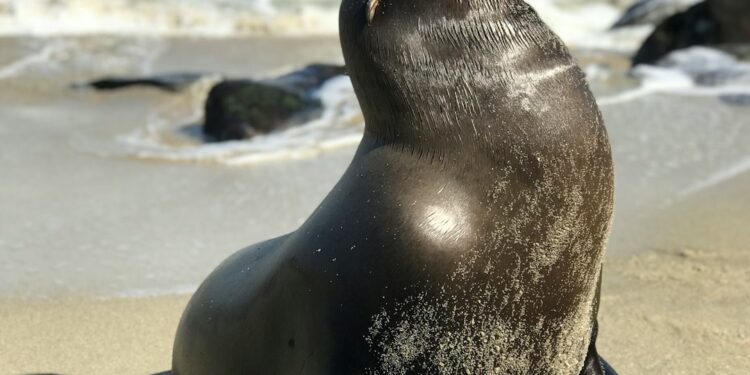Meet the Lovable Sloth – Earth’s Slowest Mammal
When you think of sloths, what comes to mind? Perhaps images of a slow-moving, tree-dwelling creature with a laid-back personality. Sloths are indeed some of the most fascinating animals on Earth, known for their leisurely pace and endearing demeanor. Let’s delve into the world of these lovable creatures and explore what makes them so special.
Sloths belong to the family Bradypodidae, which includes two genera: Bradypus (three-toed sloths) and Choloepus (two-toed sloths). They are found in the tropical rainforests of Central and South America, where they spend most of their lives in the canopy of trees. These arboreal mammals are perfectly adapted to life in the treetops, with their long claws and slow metabolism allowing them to conserve energy and move with ease among the branches.
One of the most distinctive features of sloths is their slow movement. In fact, they are considered to be the slowest mammals on Earth, moving at a leisurely pace of just 0.24 kilometers per hour. This sluggishness is a result of their low metabolic rate, which helps them conserve energy and survive on a diet of leaves, buds, and fruits. Sloths have a unique digestive system that allows them to break down the tough cellulose in leaves, enabling them to extract nutrients from their plant-based diet.
Sloths are also known for their adorable appearance and gentle demeanor. With their large, soulful eyes and permanent smile, they have captured the hearts of many animal lovers around the world. Despite their slow movements, sloths are incredibly agile climbers, using their powerful arms and claws to navigate the dense canopy of trees. They spend most of their time hanging upside down from branches, using their strong grip to support their weight as they feed on leaves and buds.
Another fascinating aspect of sloths is their symbiotic relationship with algae. The green hue that is often seen on the fur of sloths is actually a type of algae that grows on their fur, providing camouflage and protection from predators. The algae also benefits from the relationship, as it receives nutrients from the sloth’s skin and fur. This unique partnership highlights the interconnectedness of life in the rainforest and the importance of biodiversity in maintaining healthy ecosystems.
Sloths are also known for their slow reproductive rate, with females typically giving birth to only one baby per year. The young sloth, known as a cub, clings to its mother’s fur for the first few months of its life, learning how to navigate the treetops and feed on leaves. Sloths have a low mortality rate in the wild, as their slow movements and well-camouflaged fur help protect them from predators such as eagles and jaguars.
Despite their gentle nature, sloths face threats from deforestation, habitat loss, and illegal wildlife trade. Conservation efforts are underway to protect sloth populations and their forest habitats, ensuring that these lovable creatures continue to thrive in their natural environment. By raising awareness about the importance of preserving rainforests and protecting endangered species like sloths, we can help ensure a brighter future for these unique animals.
In conclusion, sloths are truly one of Earth’s most endearing and fascinating mammals. From their slow movements to their adorable appearance, these tree-dwelling creatures have captured the hearts of people around the world. By learning more about sloths and the challenges they face in the wild, we can appreciate the beauty of these gentle animals and work together to protect them for future generations to enjoy. So the next time you see a sloth hanging upside down in a tree, take a moment to marvel at the wonder of nature’s slowest mammal.















